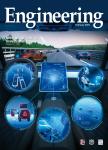Personalizing a Service Robot by Learning Human Habits from Behavioral Footprints
Personalizing a Service Robot by Learning Human Habits from Behavioral Footprints作者机构:California Institute of Technology The Chinese University of Hong Kong
出 版 物:《Engineering》 (工程(英文))
年 卷 期:2015年第1卷第1期
页 面:79-84页
核心收录:
学科分类:04[教育学] 0808[工学-电气工程] 08[工学] 0810[工学-信息与通信工程] 0830[工学-环境科学与工程(可授工学、理学、农学学位)] 0401[教育学-教育学] 0817[工学-化学工程与技术] 080202[工学-机械电子工程] 0807[工学-动力工程及工程热物理] 0804[工学-仪器科学与技术] 0805[工学-材料科学与工程(可授工学、理学学位)] 0703[理学-化学] 0802[工学-机械工程] 0812[工学-计算机科学与技术(可授工学、理学学位)] 040110[教育学-教育技术学(可授教育学、理学学位)]
基 金:supported in part by Hong Kong RGC GRC (CUHK14205914 and CUHK415512)
主 题:personalized robot habit learning behavioralfootprints
摘 要:For a domestic personal robot, personalized services are as important as predesigned tasks, because the robot needs to adjust the home state based on the operator s habits. An operator s habits are composed of cues, behaviors, and rewards. This article introduces behavioral footprints to describe the operator s behaviors in a house, and applies the inverse reinforcement learning technique to extract the operator s habits, represented by a reward function. We implemented the proposed approach with a mobile robot on indoor temperature adjustment, and compared this approach with a baseline method that recorded all the cues and behaviors of the operator. The result shows that the proposed approach allows the robot to reveal the operator s habits accurately and adjust the environment state accordingly.



